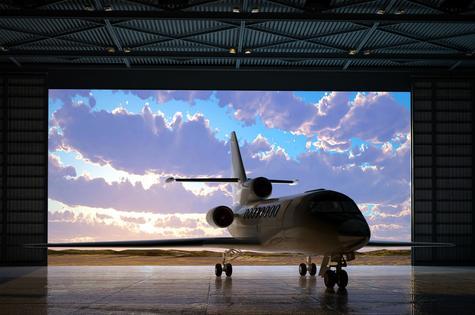Aircraft Hangar Construction: 10 Best Practices and Tips
Published in Home Articles
Building an aircraft hangar demands careful planning and attention to detail. You need a space that protects your aircraft while making maintenance and operations more efficient. From selecting durable materials to anticipating future needs, every decision matters when creating a hangar that works for you.
Let’s examine 10 best practices and tips to ensure your aircraft hangar is built to last.
1. Identify the Purpose of the Hangar
Before you begin construction, clearly define the purpose of your hangar. Will it house small private planes or larger commercial aircraft? Do you need space for maintenance equipment or storage areas for tools and parts? Understanding the primary use of your hangar will help you design the layout and size that best meets your needs.
For example, an aircraft maintenance facility will require more space and different features than a hangar meant solely for parking aircraft. Knowing your goals upfront will streamline the hangar design and construction process.
2. Choose the Right Location
The location of your hangar greatly influences its functionality and accessibility. Make sure the site is large enough to accommodate your hangar and provide enough room for aircraft movement. It's also essential to consider proximity to runways, taxiways, and airport services.
You’ll want to factor in environmental conditions as well. Consider local weather patterns, wind direction, and the potential for flooding. By taking these elements into account, you’ll avoid costly issues down the line.
3. Prioritize Durability and Customization
Once you've invested in the best possible plane for your needs, it only makes sense to invest in a state-of-the-art custom steel hangar to protect it. Steel is the ideal material for hangars due to its unmatched strength, resistance to corrosion, and ability to withstand extreme weather conditions. This durability ensures long-term protection for your aircraft with minimal maintenance.
Customization is key when designing your hangar. Airplane hangar building kits offer flexibility, allowing you to create a space tailored to your specific needs—for a single aircraft, a fleet, additional storage, or specialized workspaces. With a custom design, you can ensure your hangar is both functional and efficient, offering the perfect fit for your operations.
4. Plan for Accessibility
Easy access is a critical feature of any aircraft hangar. Your design should allow aircraft to move in and out without difficulty. Consider the size of your hangar doors and the clearance needed for the types of planes you’ll be housing. Sliding, bi-fold, or hydraulic doors are common choices depending on your hangar size and the level of automation you prefer.
You should also plan for personnel and vehicle access. Incorporate walkways, utility rooms, and parking spaces for ground support equipment. Ensuring smooth movement for aircraft and people will improve efficiency and safety in your operations.
5. Implement Proper Insulation and Climate Control
Temperature and humidity control are essential in any aircraft hangar. Without proper climate regulation, your aircraft could suffer from corrosion or other damage. Ensure that your hangar is well-insulated to prevent temperature fluctuations.
Additionally, installing HVAC systems can maintain a stable environment, protecting aircraft, tools, and equipment. Investing in proper insulation and climate control will reduce maintenance costs and prolong the lifespan of your hangar and its contents.
6. Ensure Efficient Lighting
Lighting is often overlooked in aircraft hangar construction but is an important factor for safety and functionality. Proper lighting allows maintenance crews to work efficiently and reduces the risk of accidents.
Consider using LED lights, which offer energy efficiency and long lifespans. Install lighting that provides ample visibility both inside and outside the hangar, including around entrances, walkways, and parking areas.
7. Address Drainage and Water Management
Proper drainage is critical for any hangar construction project. Without adequate water management systems, you could face flooding, water damage, or structural issues. Make sure your design includes a robust drainage system that can handle heavy rainfall or snowmelt.
Incorporating gutters, downspouts, and proper grading around the hangar will help prevent water from pooling around the foundation. A well-designed drainage system protects both your building and your aircraft from potential water damage.
8. Plan for Future Expansion
While your current needs may dictate the size and design of your aviation hangar, it’s smart to plan for future expansion. You may eventually need more space for additional aircraft or maintenance services. Designing your hangar with expansion in mind can save you money and time if your needs grow.
Consider adding extra doors, creating modular sections, or ensuring you have enough land to expand in the future. By building with flexibility in mind, you’ll be prepared for changes without needing a complete overhaul.
9. Comply With Local Regulations and Codes
Every construction project must adhere to local building codes and regulations, and airplane hangars are no exception. Make sure to consult with local authorities to ensure your project meets zoning laws, safety standards, and airport-specific requirements.
You’ll need to obtain the necessary permits before construction begins to avoid potential delays.
10. Work With the Right Contractors
For large-scale aircraft hangars, it’s important to hire contractors with experience in building aircraft facilities. Their knowledge ensures the project meets safety standards and is completed efficiently from start to finish.
For private hangars, airplane hangar building kits offer a more manageable solution. These kits are designed for easier assembly, allowing general construction teams or aviation enthusiasts to handle the process. However, for larger and more complex projects, working with experienced professionals guarantees high-quality results.
Wrapping Up
Constructing an aircraft hangar is more than just a building project—it's about creating a reliable, efficient space that serves your aviation needs for years to come. With thoughtful planning and the right approach, your hangar can offer both protection and flexibility, ensuring that your investment remains secure and your operations run smoothly.






























Comments